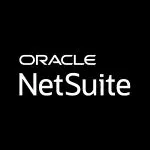Top CRM Softwares
The global CRM software market is valued at $101.4 billion in 2024 and is projected to surpass $262 billion by 2032 due to a 12.8% CAGR. (Source: Fortune Business Insights)
Customer Relationship Management (CRM) software is the essential foundation for modern business growth. It is a digital system designed to efficiently manage and analyze all customer interactions, data, and communications throughout the customer lifecycle. A top CRM centralizes information across sales, marketing, and service teams, giving your organization a unified 360-degree view of every customer. By automating workflows and providing deep analytical insights, the right CRM software significantly boosts sales productivity, improves customer retention, and drives superior revenue growth, making it a non-negotiable tool for companies of all sizes.
List of the Best CRM Tools

NetSuiteCRM (Oracle)
-
Features
- Contact Management
- Lead Management Features
- Sales Force Automation Features
- CRM Features
- Email Integration
- Custom Dashboards
- Collaboration tools
-
Category Type
CRM Sofwtare
-
Price
Contact Vendor
-
Features
- Calendar & Task
- Contact Management
-
Category Type
CRM Sofwtare
-
Price
$19 Per Month
** Buyer's Guide **
- 1. What are the most essential features a modern CRM software must have for a small business?
- 2. What is the average Return on Investment (ROI) businesses can expect after implementing new CRM software?
- 3. How can AI and machine learning features within CRM software improve sales forecasting and lead scoring?
- 4. Are there any costs associated with Android kiosk software?
1.What are the most essential features a modern CRM software must have for a small business?
A modern Customer Relationship Management (CRM) software is an indispensable tool for a small business, acting as the centralized nervous system for all customer interactions. For a small business with limited resources and an acute need for efficiency, the essential features must prioritize organization, streamlined sales processes, and ease of use.
Here are the most essential features a modern CRM software must have for a small business, organized with subheadings for clarity:
I. Centralized Contact and Data Management
The fundamental requirement of any CRM, especially for a small business, is to eliminate scattered data and create a Single Source of Truth (SSOT) for customer information.
360-Degree Customer View:
The ability to store all relevant contact information (name, company, title, social media handles) in a single profile.
Crucially, this view must include a complete, chronological log of all interactions—emails, phone calls, meeting notes, service tickets, and purchase history—regardless of which team member handled them.
Interaction and Activity Tracking:
Automatic logging of customer-facing activities (e.g., email sends, opens, clicks, and recorded calls) to ensure no manual data entry is needed for basic communication.
Customer Segmentation:
Tools to easily group contacts based on specific criteria (e.g., lead source, geographic location, purchase behavior, or sales stage). This is vital for targeted, personalized marketing and sales outreach.
II. Visual Sales Pipeline and Opportunity Management
A small business needs a clear, visual way to manage its sales process to maximize limited selling time and forecast revenue accurately.
Pipeline Visualization (Kanban/Board View):
A simple, clear visual interface (like a drag-and-drop board) that represents the entire sales process, showing exactly which stage each deal or Opportunity is in.
Lead Scoring and Qualification:
Basic tools to prioritize leads based on engagement or fit (e.g., website activity, email opens), ensuring sales teams focus on the prospects most likely to convert.
Deal Tracking:
The ability to assign a financial value, a closing date, and a probability of success to each deal. This data feeds into accurate sales forecasting.
Task and Activity Management:
Features to create, assign, and track follow-up tasks, meetings, and calls directly within the contact or deal record, preventing prospects from being overlooked.
III. Automation and Workflow Efficiency
Modern CRMs must automate the repetitive, administrative tasks that consume valuable time for a small, multi-tasking team.
Sales and Marketing Automation:
Automated workflows that trigger actions based on an event (e.g., sending an introductory email the moment a new lead fills out a website form, or auto-assigning a task to a sales rep when a deal moves to a new stage).
Email Templates and Tracking:
A library of customizable, professional email templates for common communications (e.g., introductions, follow-ups, quotes).
Tracking features that notify the user when a prospect opens an email or clicks a link.
Calendar and Scheduling Integration:
Seamless two-way synchronization with popular calendars (like Google or Outlook) and tools for prospects to self-schedule meetings, eliminating the “email tag” game.
IV. Reporting, Analytics, and Dashboards
Data-driven decisions are essential for a small business to grow strategically and understand its Return on Investment (ROI).
Real-Time Dashboard:
An intuitive, high-level view of critical metrics (Key Performance Indicators or KPIs) upon login, such as: total pipeline value, number of new leads, sales activity levels, and conversion rates.
Customizable Reporting:
The ability to generate simple reports on sales performance, lead sources, and team activities without requiring complex technical skills.
Sales Forecasting:
Basic sales forecasting tools based on the weighted value of deals in the pipeline, allowing for better financial planning.
V. Practical Usability and Technical Foundation
For a small business adopting its first CRM, the software must be easy to use and capable of growing alongside the company.
Intuitive Interface and Ease of Use:
A clean, user-friendly design that requires minimal training, leading to faster team adoption. Small businesses cannot afford a long, complex implementation phase.
Third-Party Integrations:
The ability to easily connect with other essential business applications, such as:
Email clients (Gmail, Outlook)
Marketing tools
Accounting software (QuickBooks, Xero)
Mobile CRM App:
A fully functional mobile application that allows sales and service teams to access, update, and log customer information on the go, crucial for field-based or traveling staff.
Scalability:
The software must be cloud-based and capable of accommodating growth—new users, more data, and potentially more advanced features—without requiring a complete system overhaul.
2.What is the average Return on Investment (ROI) businesses can expect after implementing new CRM software?
The average Return on Investment (ROI) businesses can expect after implementing new CRM software is often cited in studies as being quite high, but the exact figure can vary significantly.
One of the most frequently quoted statistics suggests that for every $1 spent on CRM, businesses can expect an average return of around $8.71 (based on a 2014 study from Nucleus Research).
In terms of percentage ROI, other reported figures include:
An average CRM ROI of around 211% to 445% depending on the specific study and metrics used.
A properly implemented CRM system having the potential to exceed 245% ROI.
A three-year ROI of over 500% in some case studies.
Key Takeaways:
Significant Return: The consensus across various studies is that a well-executed CRM implementation yields a strong, positive ROI.
Adoption is Crucial: The success and magnitude of the ROI are heavily dependent on user adoption and software utilization. Companies with high user adoption and full utilization tend to achieve significantly higher returns.
Payback Period: Many businesses can achieve payback on their CRM investment within 12 to 18 months.
The actual ROI a business achieves will be influenced by factors like the industry, company size, the quality of the implementation, user training, and how well the CRM aligns with and improves existing business processes.
3.How can AI and machine learning features within CRM software improve sales forecasting and lead scoring?
AI and machine learning (ML) features within CRM software revolutionize sales forecasting and lead scoring by replacing guesswork and static rules with dynamic, data-driven, and highly accurate predictions.
Here is how they improve each area:
1. Improved Sales Forecasting
AI/ML algorithms analyze massive amounts of data—far more than a human or a spreadsheet can—to predict future sales outcomes with much greater accuracy.
| Feature | How AI/ML Improves Forecasting | Benefit to the Business |
| Data Analysis | ML models automatically process and correlate hundreds of variables, including: Historical sales data, Customer interaction data (emails, calls), Sales rep activity, Seasonal trends, and External factors (economic indicators). | Higher Accuracy: Provides a much more reliable prediction of revenue, often exceeding 90% accuracy. |
| Elimination of Bias | ML uses objective, statistical data to calculate probabilities, effectively removing the common human biases like a sales rep’s over-optimism or “sandbagging.” | Reliable Revenue Planning: Allows leadership to make smarter decisions on resource allocation, hiring, and inventory. |
| Risk Detection | The system continuously monitors the pipeline to identify “at-risk” deals by analyzing behavioral patterns (e.g., a deal stalled too long in one stage, lack of recent engagement, or negative sentiment in communications). | Proactive Intervention: Managers get instant alerts, allowing them to coach the rep or step in to save the deal before it’s too late. |
| Dynamic Adjustment | Unlike static spreadsheets, the ML model continuously learns and adapts as new deals are won, lost, or as market conditions change, improving its predictions in real-time. | Agile Strategy: Ensures forecasts remain relevant even in a rapidly changing business environment. |
2. Enhanced Lead Scoring
Traditional lead scoring relies on manually set, static point values (e.g., +10 points for a job title, +5 for downloading a whitepaper). AI/ML uses predictive analytics to calculate a lead’s true likelihood of conversion.
| Feature | How AI/ML Improves Lead Scoring | Benefit to the Business |
| Predictive Scoring | ML trains on the historical data of all past leads (both won and lost deals) to determine which combination of attributes and behaviors actually predicts a successful conversion. | Sales Prioritization: Sales reps focus 100% of their time on the leads with the absolute highest probability of closing, drastically improving conversion rates and sales efficiency. |
| Dynamic Scoring | The score is a real-time, fluid probability (e.g., a 92% chance of conversion), not a fixed point total. It instantly changes based on the lead’s latest action, such as viewing a pricing page or engaging with a sales email. | Perfect Timing: Allows the sales team to engage the lead at the exact moment their buying intent peaks, known as “speed-to-lead.” |
| Uncovering Hidden Signals | AI can detect subtle, non-obvious patterns that a human would miss, such as a specific combination of visited web pages, the time of day a form was submitted, or the keywords used in an initial chat. | Deeper Insight: Ensures that truly high-potential leads are never accidentally missed or low-scored due to reliance on basic criteria. |
| Contextual Data Enrichment | AI automatically pulls in and analyzes external data, such as firmographics (company size, revenue), technographics (what tech they use), and intent signals (e.g., if they are researching competitors). | Richer Lead Profiles: Provides the sales rep with a comprehensive understanding of the lead and their company before the first call, allowing for highly personalized outreach. |
4.What common issues or challenges should a business anticipate during the implementation and adoption of new CRM software?
A business should anticipate several common issues and challenges during the implementation and adoption of new CRM (Customer Relationship Management) software, many of which are often cited as reasons for implementation failure:
1. Low User Adoption
This is arguably the most critical challenge. If employees don’t use the system consistently and correctly, the investment provides little to no value.
Resistance to Change: Users are comfortable with old processes, view the new system as extra work, or fear their job responsibilities will change.
Steep Learning Curve/Poor Usability: The system is too complex, confusing, or not well-tailored to their daily workflows, making it harder than the old method.
Lack of Perceived Value: Employees don’t understand how the CRM makes their specific job easier or more productive.
Insufficient Training and Support: Training is too generic, not role-specific, or stops immediately after the initial go-live.
2. Data Challenges
The quality and transfer of existing customer data is a major hurdle.
Poor Data Quality (Garbage In, Garbage Out): Existing data is incomplete, outdated, inconsistent, or duplicated, leading to inaccurate reports and flawed decision-making.
Data Migration Issues: The process of moving data from old systems (spreadsheets, legacy software) to the new CRM is complex, time-consuming, and prone to errors.
Establishing Data Standards: Failing to define clear rules for how data must be entered, maintained, and updated moving forward.
3. Strategy and Planning Issues
Problems often begin before the implementation even starts.
Lack of a Clear CRM Strategy: Implementing the technology without defining clear business goals, key performance indicators (KPIs), or a vision for how the CRM will improve customer relationships and business processes.
Choosing the Wrong Solution: Selecting a CRM that is either too simple/lacks necessary features or is overly complex/expensive for the business’s actual needs.
Underestimating Time and Budget: Implementation projects often take longer and cost more than initially planned, leading to budget overruns and delays.
Scope Creep: Allowing the project’s requirements to expand continuously beyond the original plan, which drains resources and delays the launch.
4. Integration and Technical Hurdles
Getting the new system to work seamlessly with other business tools is essential.
Integration Difficulties: The CRM must connect with other core systems (ERP, marketing automation, accounting, help desk), and non-native integrations can be complicated and fragile.
Customization Challenges: Underestimating the need for unique configurations to match specific business workflows, or, conversely, over-customizing the system, which makes it harder to maintain and upgrade.
5. Lack of Organizational Alignment and Leadership
CRM success requires buy-in and coordination across the organization.
Missing Executive Sponsorship: If senior leadership does not actively champion the CRM and use it themselves, the project loses credibility and priority across the organization.
Insufficient Stakeholder Involvement: Excluding key department heads or end-users from the planning and testing phases, resulting in a system that doesn’t meet their needs.
Misaligned Workflows: Failing to redesign or optimize existing business processes to fit the CRM’s capabilities (or vice versa), which often results in employees reverting to old, inefficient methods.

NetSuiteCRM (Oracle)
-
Features
- Contact Management
- Lead Management Features
- Sales Force Automation Features
- CRM Features
- Email Integration
- Custom Dashboards
- Collaboration tools
-
Category Type
CRM Sofwtare
-
Price
Contact Vendor
-
Features
- Calendar & Task
- Contact Management
-
Category Type
CRM Sofwtare
-
Price
$19 Per Month




